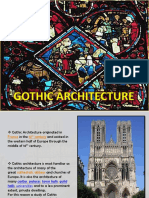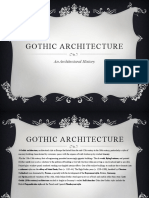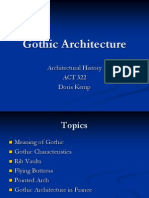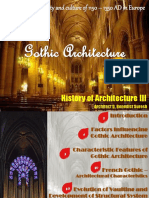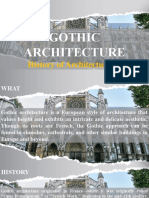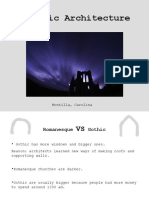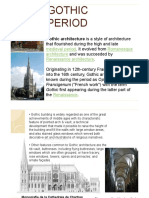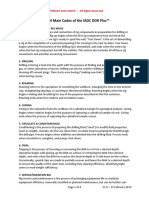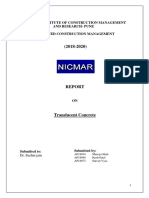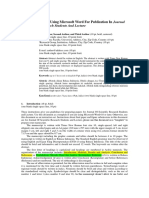0% found this document useful (0 votes)
103 views4 pagesGothic Report
Gothic architecture originated in 12th century France and used pointed arches, ribbed vaults, and flying buttresses. It was most prominently featured in great European cathedrals, abbeys, and churches and was known for its high ceilings, stained glass windows, and sense of flying. Gothic architecture expressed power and appealed to emotion through its use in religious buildings and civic structures.
Uploaded by
Nuralia bt zahariCopyright
© © All Rights Reserved
We take content rights seriously. If you suspect this is your content, claim it here.
Available Formats
Download as PDF, TXT or read online on Scribd
0% found this document useful (0 votes)
103 views4 pagesGothic Report
Gothic architecture originated in 12th century France and used pointed arches, ribbed vaults, and flying buttresses. It was most prominently featured in great European cathedrals, abbeys, and churches and was known for its high ceilings, stained glass windows, and sense of flying. Gothic architecture expressed power and appealed to emotion through its use in religious buildings and civic structures.
Uploaded by
Nuralia bt zahariCopyright
© © All Rights Reserved
We take content rights seriously. If you suspect this is your content, claim it here.
Available Formats
Download as PDF, TXT or read online on Scribd
/ 4












